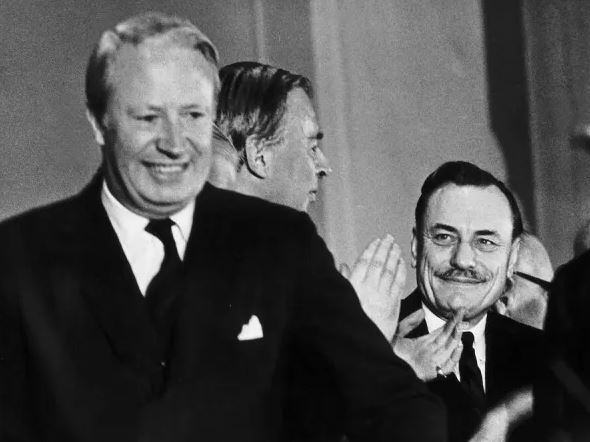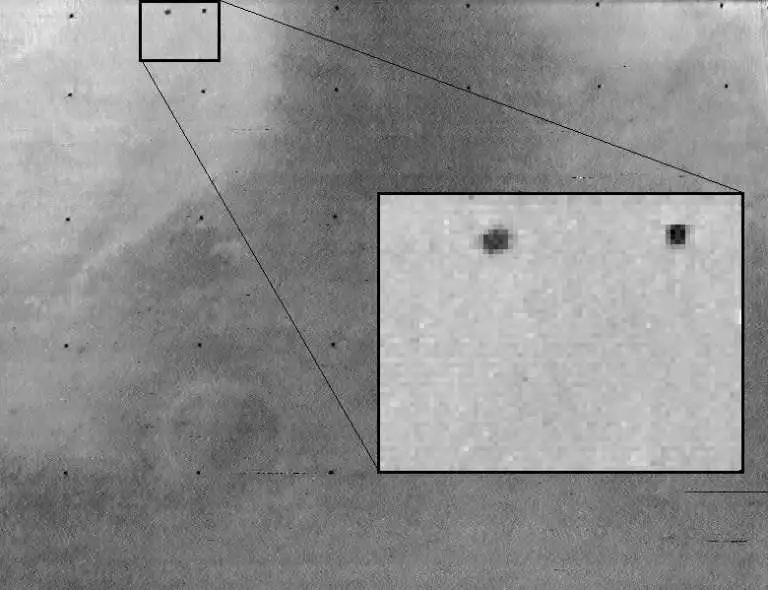
by Victoria Lucas
No.
No, no, no, no. no. I don’t believe it, can’t believe it, am not going to believe it.

Paul McCartney
Longer than the road that stretches Out ahead."
Continue reading [May 24, 1970] Let It Be (The Beatles break up)

by Victoria Lucas
No.
No, no, no, no. no. I don’t believe it, can’t believe it, am not going to believe it.

Paul McCartney
Continue reading [May 24, 1970] Let It Be (The Beatles break up)

by Victoria Silverwolf
Resurrection
Well, what do you know. A magazine I thought as dead as a doornail has risen from its grave. I've reviewed every issue of Worlds of Tomorrow from its birth in 1963 to its demise in 1967. After three years of mouldering in the grave, like John Brown's body, it has returned. Let's take a look at this revenant to see if it was worth digging up.
Continue reading [May 22, 1970] Back From The Dead (Summer 1970 Worlds of Tomorrow)

by Victoria Silverwolf

Cover art by Roy E. La Grone.
Henry Sutton is the pen name of David R. Slavitt, a highly respected classicist, translator, and poet. As Sutton, he wrote a couple of sexy bestsellers, The Exhibitionist and The Voyeur. Now he's turned his hand to a science fiction thriller. Let's see if he's as adept at technological suspense as eroticism.
The story begins with the President of the United States announcing that the nation will stop all research into the use of biological weapons. Instead, only defensive research will take place.
That sounds great, but it means very little. Figuring out how to defend oneself against such weapons means you have to produce them and study them.
Next, the author introduces a number of characters in a tiny town in Utah and at the nearby military base. Guess what kind of secret research goes on at the base?
Pilot error during an unexpected storm leads to a virus being released on the town. The deadly stuff causes Japanese encephalitis, a disease with a high mortality rate. Survivors often have permanent neurological damage. There is no cure.
When a number of people come down with the disease, the military seals off the town. The phone lines are cut. One character is shot in the leg while trying to leave. Meanwhile, politicians in Washington try to cover up the disaster.
Our lead characters are a widowed man and a divorced woman who happened to be out of town when the virus hit the place. (The disease is normally transmitted via mosquito bites rather than from person to person. That's why he gets away with a relatively minor set of symptoms and she isn't sick at all.)
Besides giving us the mandatory romantic subplot, these two figure out there's more going on than the military is willing to admit. The man manages to sneak out of town and sets off on a long and dangerous hike across the wilderness, looking for a place where he can make a phone call to a trusted friend with government connections.
This is a taut political thriller in the tradition of The Manchurian Candidate and Seven Days in May. Like those bestselling novels, both adapted into successful films, it creates a cynical, paranoid mood. I can easily imagine Vector as a motion picture.
Less of a science fiction story than last year's similarly themed bestseller The Andromeda Strain by Michael Crichton, Vector is a competent suspense novel. The narrative style is straightforward, meant for readability rather than profundity. The love story seems thrown in just to satisfy the expectations for mass market fiction.
Three stars.
Continue reading [May 20, 1970] Circus of Hells, Tau Zero, and Vector (May 1970 Galactoscope #2)

By Mx Kris Vyas-Myall
As I am writing this, the news has come in confirming we will have a general election in one month’s time. This is not an entirely surprising move. Wilson would have been required to call one by March next year at the latest and, for the sake of parliamentary business, it is often seen as better to call one in May or June, in the lead up to the summer recess but before international conferences, like Britain’s negotiation for the common market (so the country’s leadership doesn’t change midway through as in Potsdam).

However, it is also hard not notice this has occurred at the same time as a massive shift in fortunes of opinion polling for the government. In January, Marplan polling gave Labour a 13 point deficit to the Conservatives, their most recent figures give them a 3 point lead. This is matched by figures from NOP and Gallup, whilst Harris polling gives them a two point lead. The main reason for this turn around is seen as economic fundamentals turning in Wilson’s favour. Wages are rising faster than inflation, the balance of payments crisis seems to be easing, EEC entry is finally on the horizon, and more houses are being built than ever before.
However, there are a number of reasons for us not to assume this is a done deal. Most obviously, if the polls can swing 16 points one way in a few months, there is no reason they could not shift a few points back by election day. In fact Labour’s support has been so rocky over the past 6 years, not because their voters are switching to the Conservatives and back, but they are just saying they will try the liberals or not vote for anyone. The thing about floating voters is one rough current means they are carried miles away.
Secondly, this will be the first nationwide election held under the new Representation of the People Act, giving those aged 18-20 the right to vote for the first time. As such it is new territory for pollsters to try to guess how many will vote and if they are indeed talking to the right kind of young person. Who is more representative of the voter who will turn up, the firebrand on campus or the working-class single mother?

Finally, there is the Powell factor. In spite of his removal from the Conservative frontbenches, Enoch Powell’s brand of populism has continued to cause a stir around the country. His bombastic statements on the immigrant birth rates, the need to cut the government budget and condemning American involvement in Vietnam, sometimes seem to get as much coverage as a speech from Mr. Wilson or Mr. Heath. Whether more scrutiny will draw in or push away from voters to the Tory cause is something that is very hard to predict.
Vision of Tomorrow #9

Cover and all internal illustrations by Eddie Jones
On the other hand, Vision of Tomorrow is as predictable as always. It has got into a groove of quiet competence of late and much of it sticks to well-trodden paths.
Continue reading [May 18th, 1970] Rematch (Vision of Tomorrow #9)

by Gideon Marcus
Rime of the Recent Mariner
I always cast about the news for tidbits to head my articles. After all, when people read my writings, say, a half-century hence, I want them to be appreciated in the context in which they were created. Creations, and critique of those creations, cannot stand in isolation (or so I believe).
But, wow, how many times can I talk about the latest protest/riot (six killed in Atlanta last week), or Cambodia (Admiral Moorer recently assured us that the reason we can't destroy the mobile NVA base is…because it's mobile; but we did liberate 387 tons of ammunition, 125 tons of prophylactics, and 83 tons of Communist finger puppets so the Search & Destroy mission was absolutely a success), or the Warm War going on in the Middle East (2 Egyptian Mig-21s shot down the other day, 2 Syrian Mig-17s the day before, but the Israelis absolutely did not lose an F-4 over Lebanon) before it all sounds the same? Even Governor Reagan's latest escapades into cost effectiveness and court stacking are old hat.

This iteration of Bull Wright instills less confidence than Dan Rowan's…
To heck with it. Today, I'm going to stick with news in my bailiwick, and nifty news to boot.
You folks surely remember Mariners 6 and 7, twin probes sent past Mars last year, returning unprecedented information and photos from The Red Planet. Well, even now, both probes are contributing to science, long past their original mission.
JPL astronomer Dr. John D. Anderson and Cal Tech astronomer Dr. Duane O. Muhleman are using the two spacecraft to test the validity of Einstein's theory of relativity. Per Einstein, the velocity of light slows in the presence of a gravitational field. If that's the case, then the signals from the Mariners, as they pass the Sun, should decrease—slightly, but measurably.
To measure this, the two scientists had to wait until Mariner 6 and Mariner 7 passed behind the Sun with respect to the Earth. For the former, this happened on April 30; for the latter, May 10. The precise distance-measuring system the two scientisits built in the Mohave Desert should register a slow-up of 200 millionths of a second in the spacecrafts' round trip signal.
This confirmation, should it be reported, will help put paid efforts by other scientists who say that Einstein's theories are wrong or inaccurate, by as much as 7% according to Princeton's Dr. Robert H. Dicke, who needs that to be the case for his theory of Mercury's curious orbital eccentricities.

In other Mariner news, New Mexico State Univ. astronomer and Mariner project scientist Bradford A. Smith has some neato news about Phobos, the larger of Mars' moons. Mariner 7 snapped a picture of the little rock at a distance of 86,000 miles. JPL photo-enhancement techniques indicated that Phobos was nonspherical and was larger and had a darker surface than previously thought. It's just 11.2 by 13.7 miles in dimension, elongated along the orbital plane. Its average visual geometric albedo is just 0.065, lower than that known for any other body in the solar system.
With its weird shape and composition, all signs point to Phobos not being a sister or daughter of its parent planet, but rather, probably a captured asteroid.

The issue at hand
In a happy, elevated mood, now let us turn to the latest issue of Fantasy and Science Fiction—after all, it doesn't do to review stories on an empty soul.

cover by Jack Gaughan illustrating
[New to the Journey? Read this for a brief introduction!]

by Kaye Dee
On 5 May, the Apollo-13 crew visited the Grumman Aircraft Engineering Corporation factory in Bethpage, New York, to thank the company for its lifesaving Lunar Module, without which the recent lunar mission would have ended in disaster.
 left to right: Apollo-13 astronauts Haise, Swigert, and Lovell during their visit to Grumman's Bethpage plant
left to right: Apollo-13 astronauts Haise, Swigert, and Lovell during their visit to Grumman's Bethpage plant
The Grumman team’s contribution to the successful outcome of the mission – understanding the full capabilities of the vehicle they had designed so that it could be pressed into service as the astronauts’ lifeboat – is just one example of the innovativeness and dedication of the many NASA support teams working behind the scenes in the Apollo programme.
Today, I want to tell another behind-the-scenes story, one that comes “straight from the horse’s mouth”, as I’ve interviewed many of the personnel involved – the crucial role played by NASA’s space tracking networks, in particular the Manned Space Flight Network (MSFN) in Australia, in saving Apollo-13. I hope it will give you some insight into the complex technical and logistical operations that were required to respond to the emergency, and a feel for the urgency with which everyone was operating.
Continue reading [May 14, 1970 Another Perfect Emergency (Saving Apollo-13)

by Victoria Silverwolf
These are troubling times.
We are all still recovering from the shock of the killing of four students and the wounding of nine others by Ohio National Guard troops at Kent State University on May 4. A mere four days later, construction workers and office workers clashed with anti-war protestors in New York City.

Due to the distinctive headgear worn by some of the construction workers, the incident has become known as the Hard Hat Riot.
In the chaos that ensued, with an estimated twenty thousand people in the streets near Federal Hall, the counter-protestors attacked the anti-war demonstrators while police did little to stop the violence.
The pro-war crowd later marched up Broadway and threatened to attack City Hall. They demanded that the building's flag, flown at half-mast in commemoration of the Kent State killings, be raised to full mast. In an example of grim irony, the hard hats and their allies also attacked nearby Pace University, a conservative business school.
About one hundred people were injured, including seven police officers. Six people were arrested. Only one of them was a construction worker.
With all of this going on, it's tempting to escape from the real world and allow our imaginations to run wild. As we'll see, however, the latest issue of Fantastic contains as much violent conflict as reality.

Cover art by Gray Morrow.
Continue reading [May 12, 1970] War and Peace (June 1970 Fantastic)

By Mx Kris Vyas-Myall
The World Cup starts later this month in Mexico and excitement in England is palpable. Winning four years ago at Wembley has raised expectations significantly, and there is a real hope that England can repeat the success Brazil had in the early 60s, to win two years-on-the-trot.
Possibly one of the strangest ways this has manifested is in a new album, sung by the Current World Cup Squad!

In its special circular football sleeve, you can discover what it sounds like to have Bobby Moore singing Ob-La-Di, Ob-La-Da or Gordon Banks covering Lovey-Dovey. (From what I have heard of it on the radio, consider my curiosity fully sated).
Off the pitch, there is once again an international competition for my attention in the anthology releases. With Carnell leading his team for another round of New Writings facing off against new fiction from the Soviet Union. Three years ago, the two countries faced off in one of my articles, now let’s see how each of these new seven stories matchup:
New Writings in SF-17

Continue reading [May 10, 1970] Fever Pitch (New Writings in S-F 17 & Vortex)
Be sure to tune in tonight at 7PM Pacific for a terrific Science Fiction Theater!

by Gideon Marcus
It shouldn't happen here (or anywhere)
It was a scene out of Saigon or Prague. It shouldn't be happening in Middle America. On May 4, Ohio National Guardsmen, shot four Kent State students dead, wounding ten more. Here's what we know:
On April 30, President Nixon announced that U.S. troops had entered Cambodia, expanding the war in Southeast Asia. This sparked mass May Day protests across the country. After the Kent State ROTC building was burned down over the weekend, Kent Mayor LeRoy Satrom asked Ohio Governor James A. Rhodes to dispatch the National Guard to the campus.
Clashes between students and law enforcement escalated, with several students reportedly being stabbed by guardsman bayonets. Calls for the Guard troops to be recalled were refused. This set the stage for Monday's tragedy.
It is not certain what triggered the firing. Eyewitnesses said about 600 protestors surrounded a company of 100 Guardsmen and began pelting them with rocks and hunks of concrete. A single shot rang out, whether from a guardsman's rifle or someone else's firearm, is unknown. Without a warning, the guardsmen then began a three second volley, half of them pointing their guns into the air, the other aiming levelly—into the milling crowd of boys and girls.

Amont the dead were William K. Schroder, 19, a sophomore from Lorain, Ohio; Jeffery Miller, 19, a freshman from Plainview, New York; Sandra Lee Scheuer, 20, a junior from Youngstown, Ohio; and Allison Krause, a 19-year-old freshman from Pittsburgh. John Cleary, 19, a freshman from Scotia, New York; Dean Kahler, a 20-year-old freshman from East Canton, Ohio; and Joseph Lewis, just 18, from Massillon, Ohio, were reported in critical condition at Robinson Memorial Hospital in nearby Ravenna. They were not all protestors—indeed, Miss Krause had just telephoned her parents to express disgust at the demonstration.
A wave of new protests is wracking the country, now with fresh ammunition. And it is ammunition that is at the center of this outrage, for the Guard did not use tear gas, rubber bullets, or blanks. Never mind if they should have been on the campus at all. At the very least, their rules of engagement should not have incurred collateral deaths on innocent students.
There are just two positive consequences of this tragedy. The first is that if the goal of calling in the Guard was to cow protestors, it has backfired spectacularly. The second is that, on May 5, President Nixon announced that American troops would be withdrawn from Cambodia in seven weeks. How much this decision is in reaction to the demonstrations and how much is due to the heavier-than-expected resistance of the Communists is presently unknown.
I suppose there's one more result—I've been radicalized, and I plan to start marching. It's something I've always supported in the abstract, but observed a modicum of restraint, recalling Tom Lehrer's sentiment, "It takes a certain amount of courage to get up in a coffee house or college auditorium and come out in favor of the things that everybody else in the audience is against – like peace, and justice, and brotherhood, and so on."
But now we see that the audience doesn't all agree, and some of them shoot. I know I'm in the over-30 untrustworthy set, but you'll see my grizzled mug in among the protestors in the weeks to come.
Congratulations, Dick—you managed something Lyndon couldn't.
Shards
And so I plunge into fiction, hoping for a relief from the growing madness. I am greeted with more madness: each of the stories in The latest issue of Galaxy is broken into pieces, with their ends crammed into the latter half of the magazine, as if written like some strange BASIC program with too many GOTO commands. Nevertheless, it's the stories that count. How are they?

cover by Jack Gaughan illustrating The Moon of Thin Reality
Continue reading [May 8, 1970] Tower of Glass (June 1970 Galaxy)

by Brian Collins
For those who don’t know, the Science Fiction Writers of America (SFWA) was founded five years ago in what would become the first successful attempt at forming a professional writers’ association for science fiction writers—at least here in the States. With the SFWA came the Nebula, an award made to be on par with the Hugo in terms of prestige, but voted on by SFWA members rather than Worldcon attendees; in other words, an award by authors for authors. SF in the American “pulp” tradition (as differentiated from SF of the H. G. Wells sort) has been around for not quite 40 years, and those of the older generation have clearly taken on a retrospective attitude as of late. If the New Wave asks where SF might be heading, then those who’ve been in charge of the SFWA, including Damon Knight and Robert Silverberg, are now asking where SF has been.
We thus have a massive reprint anthology, published by Doubleday in a rather colorful hardcover edition, called The Science Fiction Hall of Fame, Volume One. It is, as far as I can tell, the largest SF anthology since Dangerous Visions, running 560 pages. We don’t often cover reprint anthologies at the Journey, but this one is a huge endeavor, and since most of the stories included predate the Journey it would be negligent to not cover it. It’s also such a long book that we have no choice but to split the review into multiple parts. Now, many of these stories are actually not new to me, although this knowledge does little to help me when it comes to evaluating some three decades of short SF.
The Science Fiction Hall of Fame, Volume One, edited by Robert Silverberg
